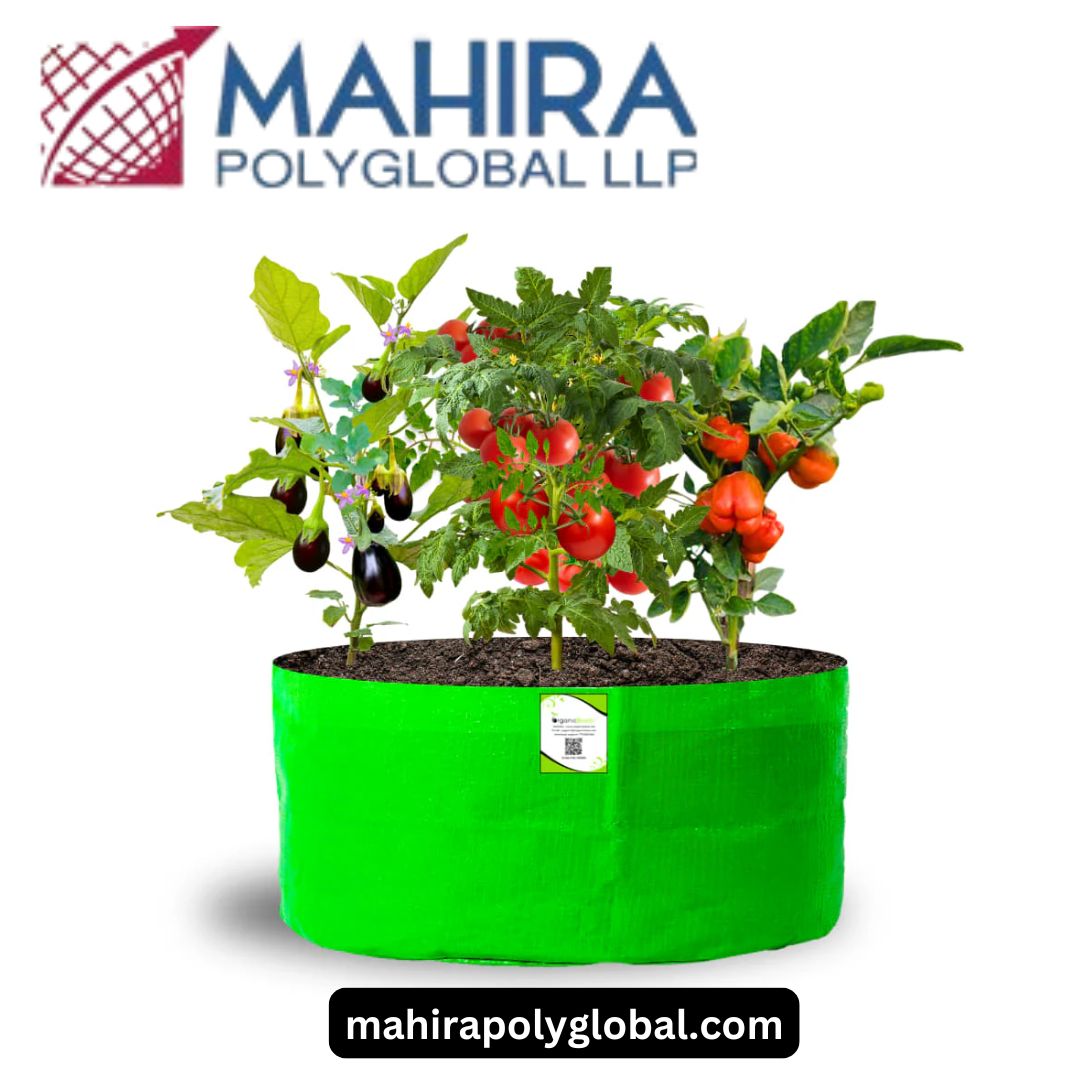The humble planter bag, often relegated to the sidelines of horticultural discourse, is undergoing a quiet revolution. Once perceived as a temporary solution or a budget-friendly alternative to traditional pots, these unassuming containers are now recognized as sophisticated tools for maximizing plant health, optimizing space utilization, and fostering a more sustainable approach to gardening. Forget the rigid constraints of terra cotta or plastic; Mahira Polyglobal LLP offer a dynamic, adaptable, and surprisingly effective method for nurturing plants, from the smallest herb to the most ambitious vegetable crop.
The Fabric Revolution: Breathability and Beyond
The key to the planter bag’s resurgence lies in its materiality. Unlike their solid-walled counterparts, most modern planter bags are crafted from breathable fabrics, typically non-woven geotextiles. This seemingly simple feature unlocks a cascade of benefits for plant health. The porous fabric allows for superior aeration of the root zone, preventing the dreaded root circling that often plagues container-grown plants. It also facilitates excellent drainage, minimizing the risk of overwatering and root rot. Think of it as the difference between wearing stuffy leather shoes and breathable canvas sneakers – the roots can breathe and thrive in a fabric bag. Moreover, the fabric allows for “air pruning,” where roots that reach the edge of the bag are naturally pruned by exposure to air, stimulating the development of a more dense and fibrous root system, leading to healthier, more vigorous plants. The quest for the perfect material has led to a boom in fabric bag manufacturers, each experimenting with different weaves, thicknesses, and blends to optimize performance.
Beyond the Balcony: Unexpected Applications of Planter Bags
While commonly used on balconies and patios – ideal for urban dwellers with limited space – the applications of planter bags extend far beyond the typical apartment garden. Consider, for example, their use in vertical gardening systems. Lightweight and easy to install, planter bags can be stacked or hung to create stunning green walls, transforming barren surfaces into vibrant displays of foliage and flowers. Another unconventional application is in mitigating soil erosion. On steep slopes or unstable terrain, planter bags can be used to establish vegetation cover, helping to stabilize the soil and prevent erosion. These versatile bags are also finding their way into commercial agriculture, where they are used for growing everything from strawberries to blueberries, offering improved drainage and aeration compared to traditional field planting. A sturdy garden bag for planting becomes an essential item for many, allowing them to cultivate a diverse landscape.
The Unsung Hero: The Freedom of Portability
One of the most compelling advantages of Garden bags for plants is their portability. Unlike heavy ceramic or concrete pots, planter bags can be easily moved, allowing you to optimize sunlight exposure, protect plants from harsh weather, or simply rearrange your garden layout on a whim. This flexibility is particularly valuable for gardeners in regions with unpredictable climates, allowing them to quickly move plants indoors during sudden frosts or heat waves. The ease of relocation also makes planter bags ideal for gardeners who rent their homes or frequently move, as they can easily transport their entire garden with them.
The Green Advantage: Sustainability in the Garden
In an age of growing environmental awareness, the sustainability of gardening practices is under increasing scrutiny. Planter bags offer several compelling environmental advantages. Firstly, they are often made from recycled materials, such as recycled plastic bottles, reducing waste and conserving resources. Secondly, their lightweight nature reduces the carbon footprint associated with transportation compared to heavier pots. Furthermore, the breathability of the fabric reduces the need for frequent watering, conserving water resources. Reputable fabric bag manufacturers are constantly innovating to create even more sustainable products, exploring biodegradable fabrics and eco-friendly manufacturing processes.
Planting & Care: Nurturing Life in a Bag
While planting in a Grow bag online is similar to planting in a traditional pot, there are a few key considerations. Choose a high-quality potting mix that is well-draining and rich in organic matter. When filling the bag, avoid overpacking the soil, as this can restrict root growth. Water thoroughly after planting and monitor the moisture levels regularly, as fabric bags tend to dry out more quickly than plastic pots. Fertilize regularly with a balanced fertilizer to provide the plants with the nutrients they need to thrive. Choose the right plant growing bags for each plant, ensuring they have enough space to expand.
Beyond Aesthetics: Functional Design and Creative Expression
Planter bags are no longer just utilitarian containers; they have become canvases for creative expression. Available in a wide range of colors, shapes, and sizes, planter bags can be used to create visually stunning garden displays. From minimalist designs to whimsical patterns, the possibilities are endless. Furthermore, the soft, flexible nature of fabric bags allows for creative shaping and arrangement, allowing gardeners to create unique and personalized garden spaces. Some manufacturers even offer custom printing options, allowing you to personalize your planter bags with your own designs or logos.
Conclusion: The Future is Fabric
The future of gardening is undeniably intertwined with the rise of the Plant growing bag. Their unique combination of breathability, portability, sustainability, and aesthetic versatility makes them an indispensable tool for gardeners of all levels, from novice beginners to seasoned professionals. As technology advances and new materials emerge, the planter bag will continue to evolve, pushing the boundaries of what’s possible in the world of horticulture. Embrace the fabric revolution and discover the endless possibilities that planter bags offer.
Frequently Asked Questions About Planter Bags
Q1: Can I reuse planter bags, and how do I clean them?
Yes, planter bags are reusable. To clean them, remove the old soil and debris. You can wash them by hand with mild soap and water or in a washing machine on a gentle cycle. Allow them to air dry completely before storing or reusing.
Q2: What size planter bag should I use for different plants?
The ideal size depends on the plant’s root system. Generally, herbs and small vegetables need a 1-5 gallon bag, while larger vegetables like tomatoes and peppers need a 10-20 gallon bag. Trees and shrubs may require even larger bags. Always research the specific needs of your plant before selecting a bag size.
Q3: Are planter bags suitable for all types of plants?
While planter bags are versatile, some plants may not thrive in them. Plants that prefer consistently moist soil may require more frequent watering in a planter bag. However, most plants, including herbs, vegetables, flowers, and even some trees and shrubs, can be successfully grown in planter bags with proper care.
Q4: How do I prevent planter bags from tipping over in windy conditions?
To prevent tipping, choose a sturdy bag made from thick fabric. You can also place rocks or other heavy objects at the bottom of the bag to provide added stability. Consider placing the bags in a sheltered location or using stakes to anchor them to the ground.




